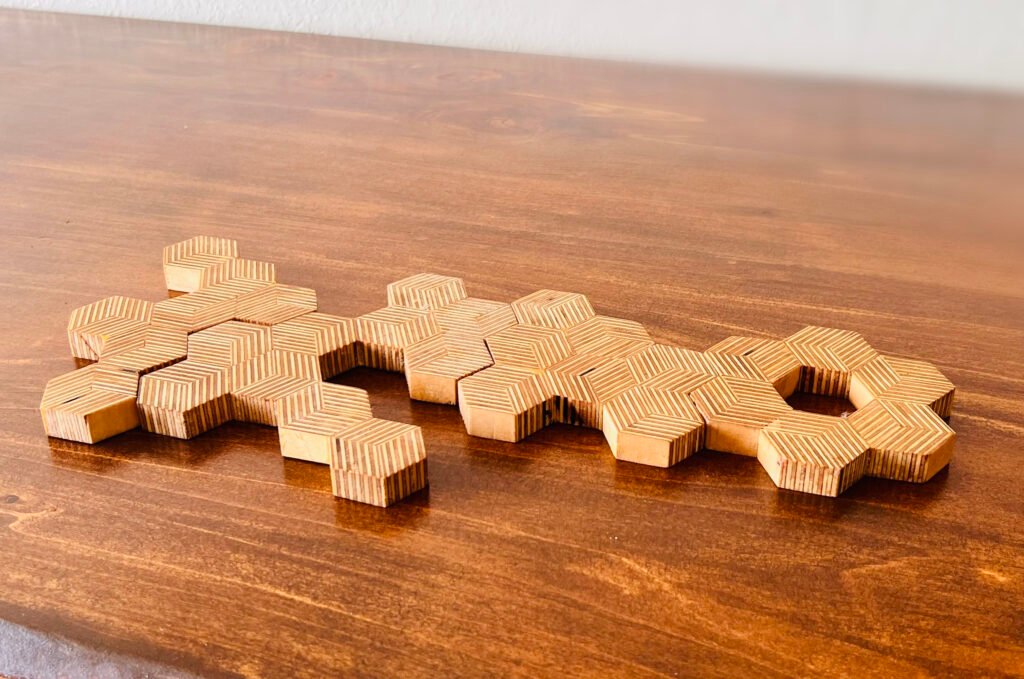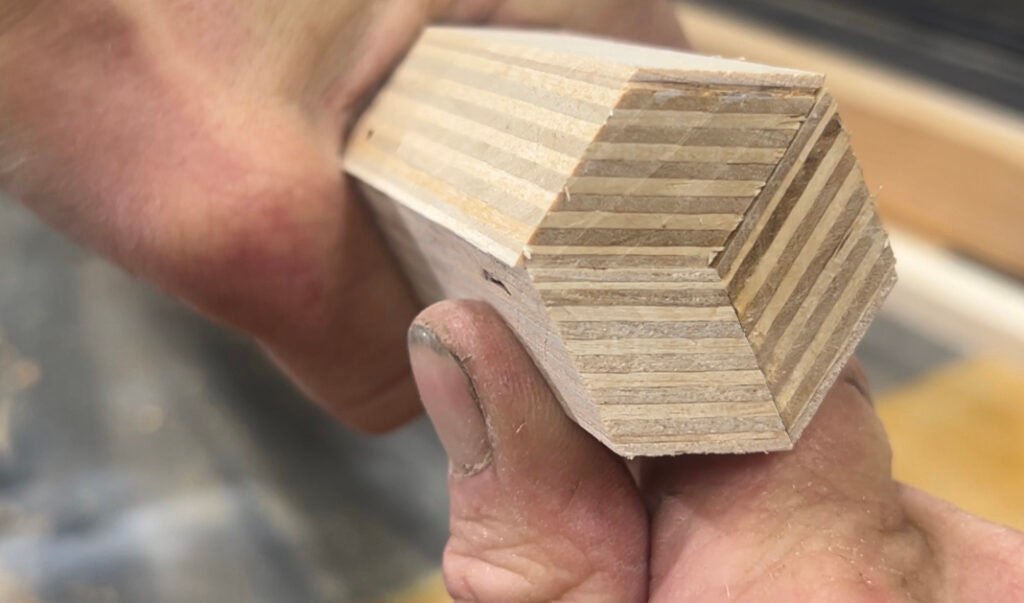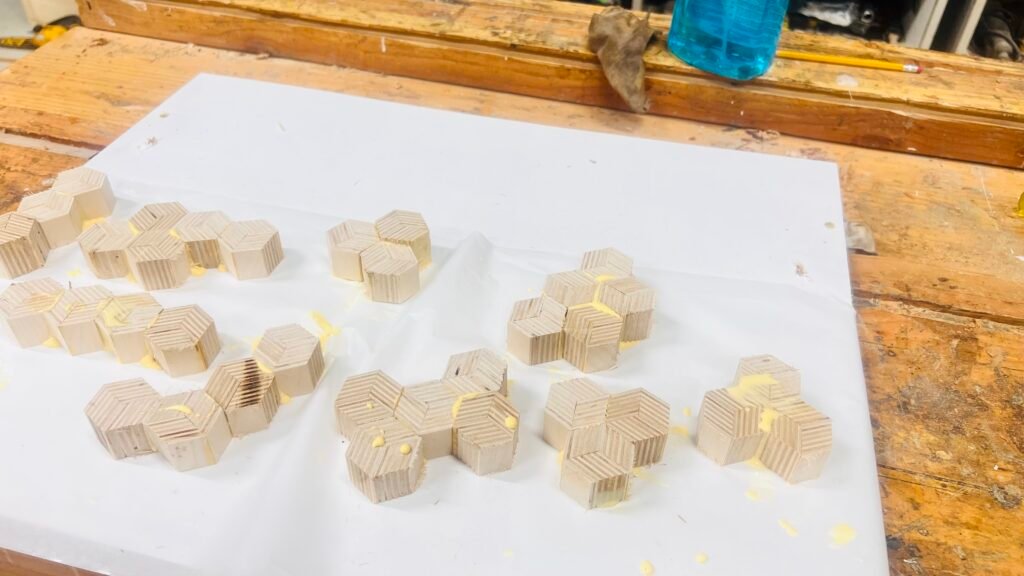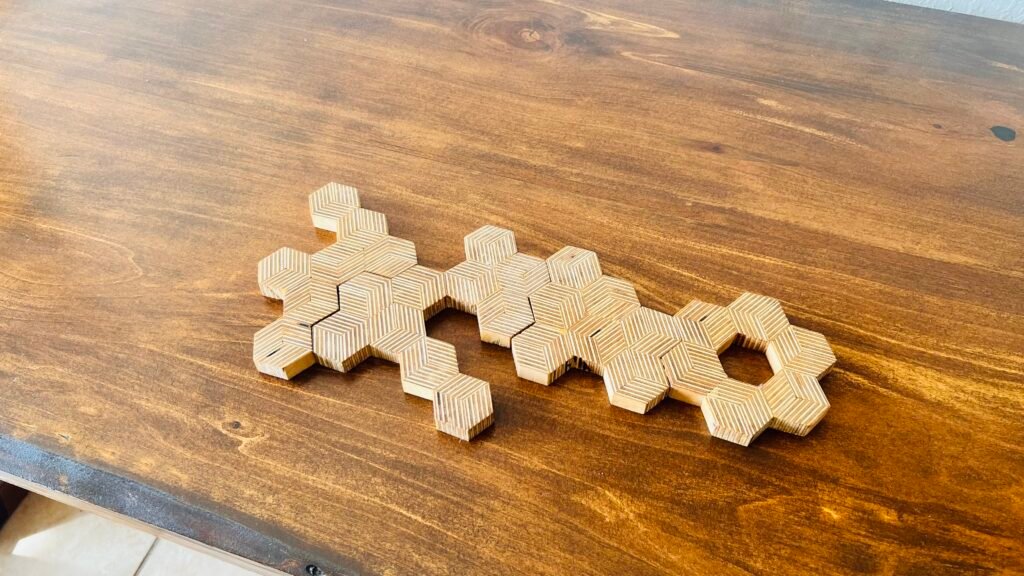If you've made anything from plywood before you have inevitably ended up with cuts-offs you don't know what to do with but you don't want to just toss them in the trash as well. Scrap wood has a way of collecting and before you know it, it has taken over your shop.
Don't toss those plywood scraps in the trash pile just yet.
This is a fun way to make use of those wood scraps and makes for a fun coffee table activity.

This works/looks better with high-quality plywood like baltic birch, or sometimes, depending on where you live, this type of cabinet-grade plywood comes in maple.
The concept is easy and so long as you have a table saw you can do this project in your spare time. They also make great gifts and stocking stuffers.
You will want to start by setting your blade to 60 degrees and cut the first edge on all the pieces you will be using. The longer the pieces the better but short one work just as well.
You will need to make these pieces exactly the same width as they are across the diagonal length. Look at this below so it will make sense.

Now you are going to rip all the pieces you have with angles cut on each side so that it looks like a parallelogram.

Next, you are going to be gluing these pieces together.


I like to use painter's take to help get these in alignment and then you can wrap more tape to function like a clamp while the pieces dry.
Now you have a long hexagonal piece of plywood.
You are going to slice them down to the thickness of choice, (I like to do 3/4 or maybe a hair thicker).

You can do this on a chop saw but doing it on a table saw with a miter gauge and stop block is the safest and fastest way.
Now that you have all your little slices here is the fun part.
You can start by putting a little glue on each side that will be touching and either make one big continuous piece or just play around with shapes like I did.
You can lay a piece of wax paper down on a flat surface and just press them together with wood glue. I use Titebond II for pretty much everything but the Original and III will work just as well.

I started gueing these pieces into shapes I thought were interesting, and made each shape different.
These are super fun to try and stack and see how high you can get them. If you made enough pieces you could make a reverse jenga where you try to stack them as high as possible.

They also look like cool molecular structures and can double as coasters on a coffee table.

I like to sand everything down to 120 or higher if I have nothing better to do.
I finish them with boiled linseed oil but you can use your finish of choice.
